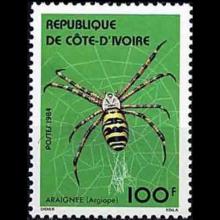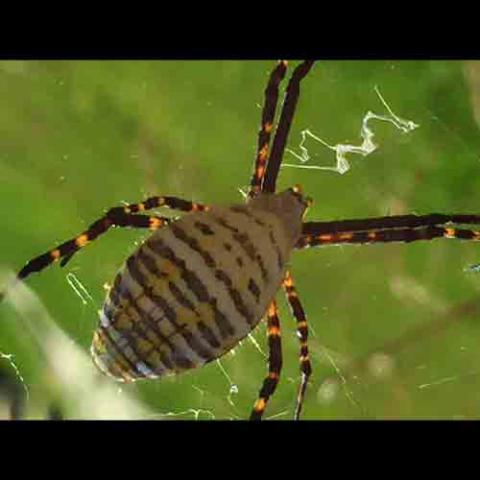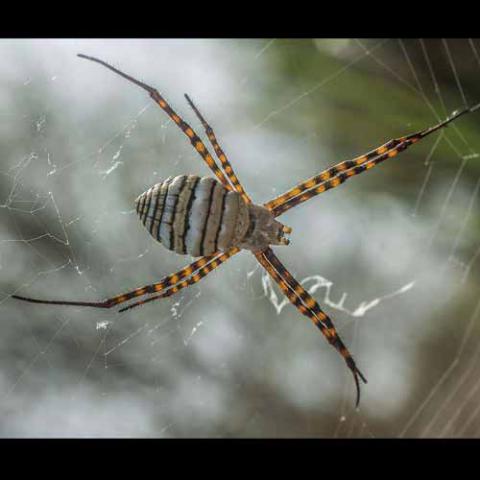NAMES
TAXONOMY
Ivory Coast
Issued:
Stamp:
Argiope trifasciata
Ivory Coast
Issued:
Stamp:
Argiope trifasciata
Ivory Coast
Issued:
Stamp:
Argiope trifasciata
Genus species (Animalia): Argiope trifasciata
Argiope trifasciata spiders often add stabilimenta, or heavy zig-zagging portions, to their webs. Stabilimenta are conspicuous lines of silk, included by many diurnal spiders at the center of their otherwise cryptic webs. It has been shown spider webs using stabilimenta catch, on average, 34% fewer insects than those without. However, webs with the easily-visible markings are damaged far less frequently by birds flying through. It is an evolutionary tradeoff the spider can influence every time it builds a new web. Read the scientific study at Behavioral Ecology magazine.
Behavior
In Illinois, Argiope trifasciata hatches in early summer but does not become readily notable until mid-August, when they have grown large enough to make their distinctive webs, which can be up to 60 cm (24 in) in diameter, among stems and bushes. The female rests at the centre of the web facing downwards, with her legs often arranged in pairs, making a cross shape; some female spiders conceal themselves in a hidden location close to the web, being alerted to a potential victim by a non-sticky thread leading to the center. Some segments of the web often have thicker threads known as stabilimenta forming a decorative pattern. Male spiders are much smaller than females and have their own small webs in close proximity to the females' webs. Argiope trifasciata is diurnal, and feeds on the insects that get snared in the web. Large, powerful prey like paper wasps, are swiftly wrapped in silk to immobilize them, before being injected with toxic saliva.
Reference: cirrusimage.com, Wikipedia



